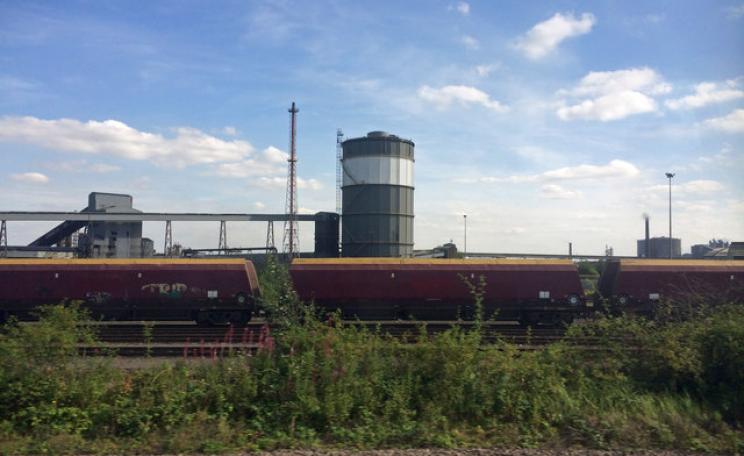-
Thick, reusable plastic pint cups for outdoor events were the trend of the summer. I’ve seen them, you’ve seen them - and we’re excited that venues are putting in the effort to dump less plastic onto the planet.
For those who’ve had their backs to the uproar around plastic pollution recently, it’s bringing up some questions. These questions are usually innocent. An inquiry to establish the system: can you refill it? A double-check of what to do 3 pints in: where do I take it back? Can I throw it in the bin? A curveball query: can it go in the composting bin?
My questions were a bit different. How much more energy and material is needed for these thicker, stronger cups? Can you recycle them at the end of their usage? How many people are taking them home, rendering their ‘reuse’-ability useless?
More carbon
A typical reusable cup is much thicker and heavier than the flimsy disposable ones, up to five times so. This means more plastic and more energy is needed to make them.
According to research from Bath University, one reusable uses about 0.2kg of carbon. The average fully grown tree can sequester about 7.2g of carbon in a year. So for a festival providing 100,000 reusable cups, we’re looking at planting 2,777 trees just to make the cups. 100,000 disposables comes in at about a quarter of that (based on weight, and this report).
Okay, but we’ve got to drink from something! And they’re reused - so surely it balances out?
Well, they need to be transported back and forth to each event, which adds up. The real problem, though, is in washing them.
Health & Safety regulations require that a clean cup be used at the nozzle. It’s easiest to collect them up and send them away to be washed in bulk. This generally means a lot more cups are ordered than one per person. In reality, it’s still about one per drink, as with any disposable cup system. And washing them, obviously, requires energy and water.
Communication
But surely, still, this isn’t as bad as making new ones?
Unfortunately, due to it being a new-ish system, it’s difficult to guarantee that cups will make it back to be reused, and not end up in the bins.
The communication at the bar and bins must be very clear, adjusting for the modified cognitive ability of drunk people, but even with the flashiest of signs it can be a challenge.
The incentive for return must be high. Boomtown offers a £10 Eco-bond for bringing your bag full of recyclables at the end of the festival and, among other motivators, they reported reduced campsite waste of 70 percent on last year.
Shamabla has reduced its carbon footprint by 80 percent - traders cannot sell drinks in single-use plastics, and no plastic is used to serve food. The festival's Recycling Exchange recycles five tonnes of waste each year.
Whereas Wireless offered 10p in its plastic bottle deposit return scheme and it was quite unsuccessful.
Waste
But at least they’re not going to landfill?
This is the crux point - for a reusable to be the greener option, it must be reused at least a few times.
No doubt that when they are, there are clear environmental benefits. Waste management is a key area of improvement for the arts and culture industry. The festival sustainability handbook, The Show Must Go On, found that they emit 20,000 tonnes CO2/yr onsite in UK, and 35 percent is from waste.
Combined, this amounts to 23,500 tonnes of waste annually. 80 percent of festivals say tackling waste & recycling is on their agenda, the highest response of all environmental challenges to the sustainability assessor, A Greener Festival’s, survey.
But when cups escape the designed system, they become a heavier source of plastic waste. Many of them are colourfully branded for each event, offering another escape from reuse. The attractive design, emboldened with the year, make for excellent souvenirs.
Camp Bestival this year even offered a cup to be taken home as part of the attempt to raise awareness - there was no deposit return. They reduced their waste by throwing none away, but the manufacture of these cups to be taken as gifts added to their carbon emissions significantly. And it also requires that more be made next year.
Recycle?
This branding also makes them much more difficult and less valuable to recycle.
Research from Zero Waste Scotland has laid out the carbon savings that can be made from manufacturing using recycled materials instead of virgin ones. The variation is wide, but it can be as much as 60 percent. The emissions at both ends of a cup’s life (manufacture and landfill) are higher than the recycling process.
Using recycled materials will inevitably also have less impact on natural resources, and it is worth remembering that typically plastic is made from crude oil - a fossil fuel.
For any temporary consumption, there will be added environmental costs. For another festival example - the piping that is laid to hook up water fountains to the mains and allow people to refill their bottles.
Many people spend their careers navigating the difficult landscape that is deciding which costs to the fields are lesser. Here, clearly, this piping is better than 100,000 people’s worth of plastic water bottles. But it is not always this clear.
Alternatives
There are, however, some good alternatives: disposable cups made from recycled plastics, or cans made from recycled aluminium - they save 95 percent of the energy used in manufacturing aluminium, and a lot of places are employing ‘can only’ schemes.
You can also bring your own, like to a cafe. Reusables are a fantastic idea - if they already exist. Then taking it back with you has virtually zero impact.
By contrast, researchers found that nine in ten cartons are sent to landfill or incineration because their composite parts (plastic, plastic film and cardboard) make them difficult to recycle. Other boxed drinks also pose challenges because they're made up of several difficult materials. The inclusion of biodegradable films adds to these woes, because they require composting.
Aluminium cans from virgin sources are problematic, as is bioplastic, or biodegradable plastics if there isn’t the right food waste or composting bin. Why are there never the composting bins??
Synthesising
What does this mean for waste generally?
Reusable cups, where recycled material is not available, are still undeniably better than disposable ones. In the UK, there are 345 different recycling systems. WRAP has created an online locator to allow households to see what they can recycle, and where to go for the rest.
There is still a long way to go in synthesizing these waste streams and improving the recycling industry’s efficiency and performance, to make proper use of the mountains of plastic currently being produced.
There is a serious shortage of capacity to recycle all materials fed into the system. The market for products made from recycled sources is still slow. So for now, reusable cups may still be the best option.
This Author
Laura Mahler is an environmental researcher and documentary filmmaker. She is founder of non-profit production company @filmthechange and has presented both her award-winning academic work and films internationally.
Image: Shamaba Festival.





